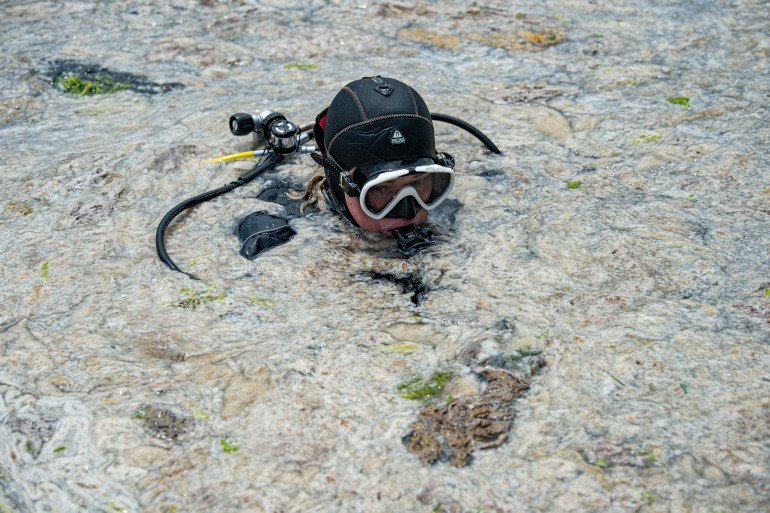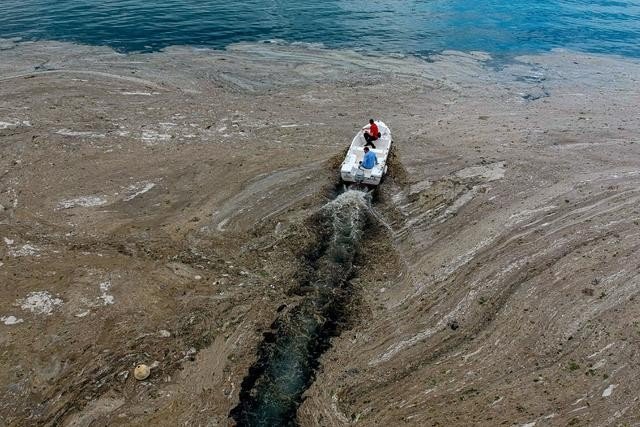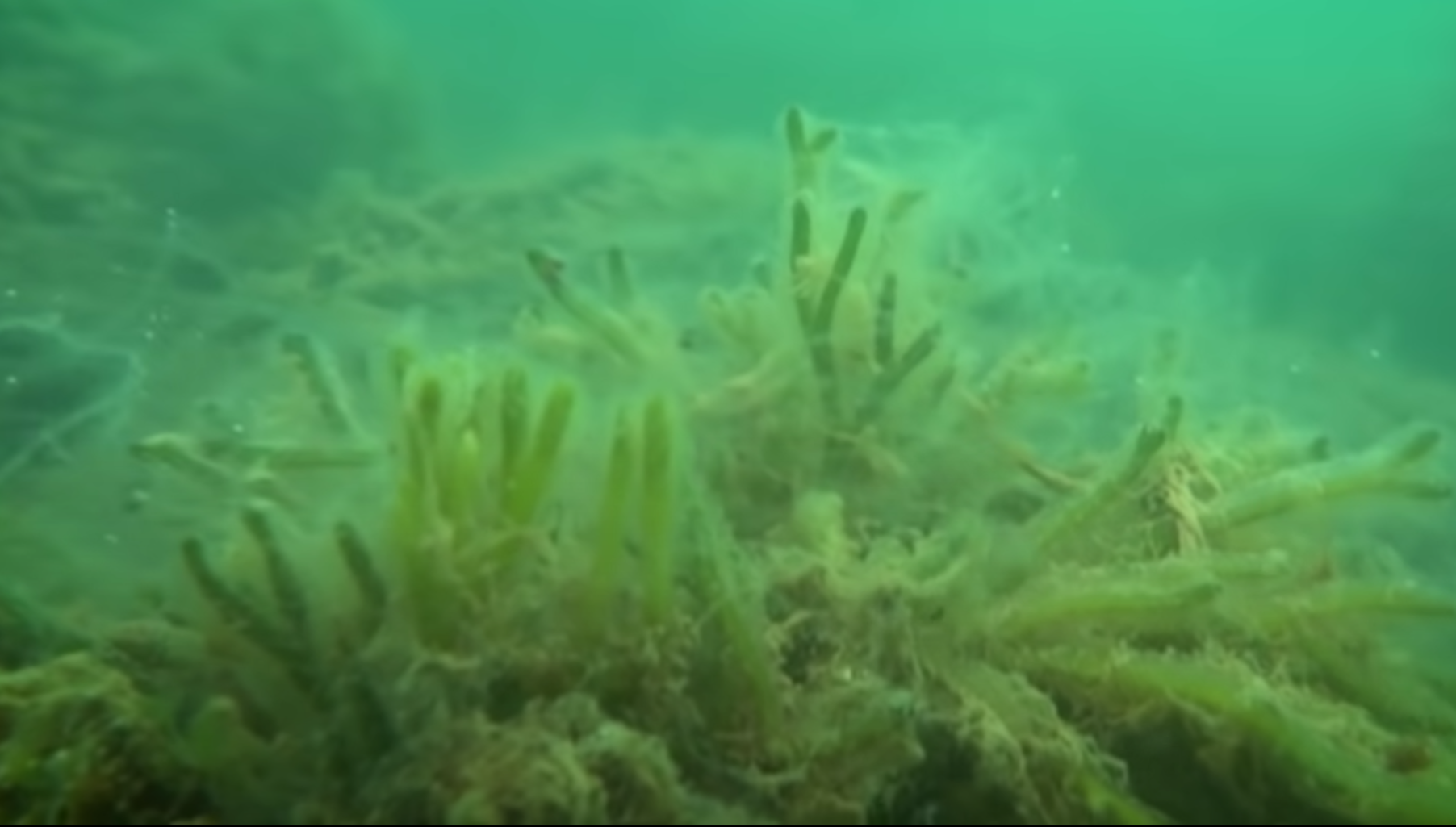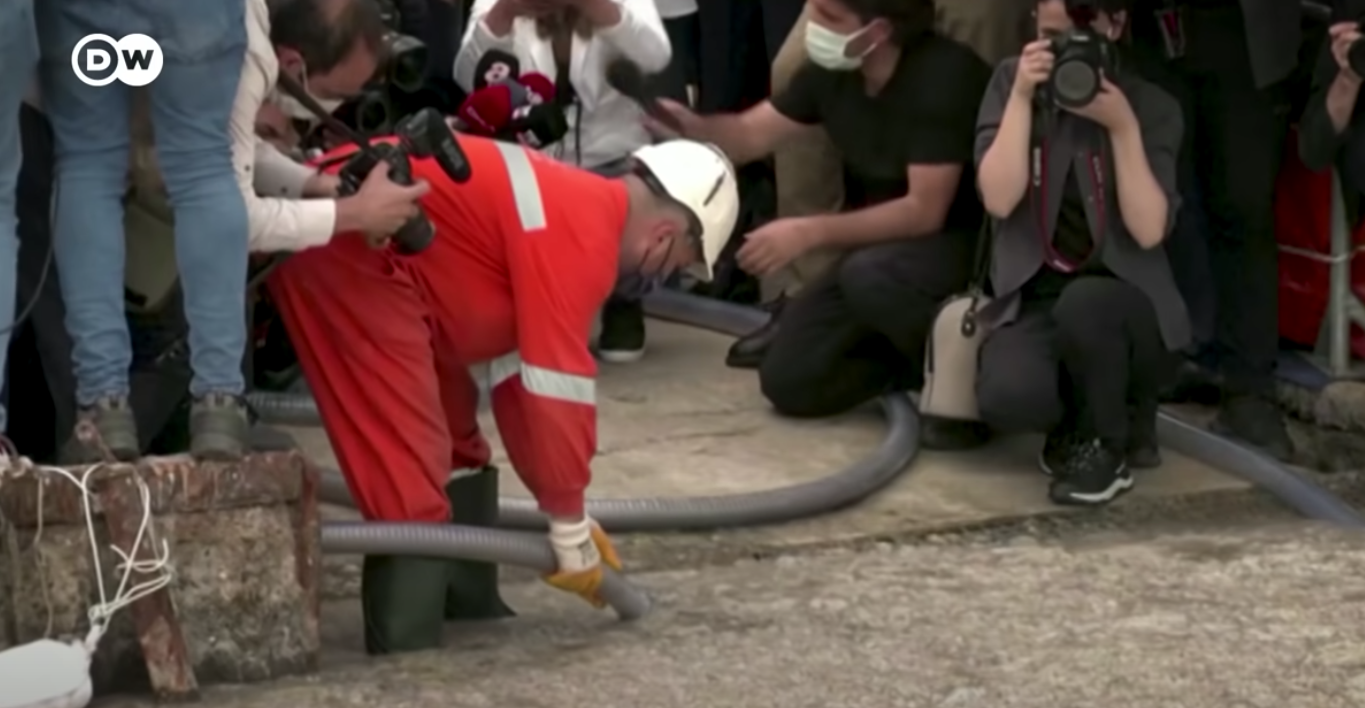The sea snot blanketing the Marmara sea off the coast of Turkey this summer almost looks like an apocalyptic movie.

The sea snot blanketing the Marmara sea off the coast of Turkey this summer almost looks like an apocalyptic movie. Having never been recorded until 2007, it is now a perennial and expanding feature of this inland sea. This summer has been the worst on record. It is an incredibly visual spectacle and as a result has garnered international attention and reaction.

Turkey Sea Snot – CBS News
These visceral images are naturally scary. They provoke disgust and fear. The citizens in the nearby area are relentlessly reminded of the problem; it is on their doorstep. I have said for a long time that climate change would have been responded to earlier if carbon dioxide had some sort of colour or produced some sort of direct visual contamination in the sky. The population of Turkey cannot help but acknowledge the marine crisis. It is too nearby, slimy and smelly.
As well as being an eyesore, this oceanic phenomenon has had some disastrous effects on the depths of the marine environment. Shellfish can apparently not survive, as when they open up, the sea snot prevents them from closing properly. All the sea snails are now apparently dead. The snot has been wrapping itself around corals preventing them from feeding and breeding. Thousands of fish have turned up dead on the shore due to hypoxia in Bandirma.

Snot covered Coral: Screenshot from DW News
This has had some fairly predictable effects on the local economy. Fishing has become virtually impossible due to nets being clogged. Tourism has been hugely degraded, no one wants to swim and those that do in less snotty areas come out with irritated skin. Apparently the smell is also terrible. The sense of wellbeing in general is eroded. Istanbul, the jewel of the Mediterranean is besieged by pungent noxious slime.
This has occurred due to a confluence of problems, not limited to:
Global warming, the chief among them, creating warmer and more suitable waters for algal blooms.
Excess Nitrogen and Phosphate from ‘deep discharge’ (pumping raw sewage 30-50m under the ocean, essentially the same as sweeping the dirt under the rug) is also a major factor. This practice was started in the 70s and holds today.
Overfishing of filter feeders that regularly consume the algae and phytoplankton is the final nail in the coffin.
All together, these three factors create a perfect environment for the snot to form.
Turkey’s government is about to embark on a clean-up effort. I have been watching videos of booms and boats trying to suck up the slime. These seem very expensive superficial remedies. Tackling the symptom, not the problem. These are visual remedies for the visual problem and harken back to my original analysis. Humans are incredibly visually rather than factually stimulated. Notice the number of cameras around the image below.

Man tries to suck up sea snot with a pump: Screenshot from DW News
Turkey’s environment minister, Murat Kurum has said that at the same time measures would be taken to reduce nitrogen in the water by 40%. This seems like a much better idea to me. Removal of the ‘deep discharge’ sewage system sounds pretty critical to having any chance of returning some sort of balance to the ecology.